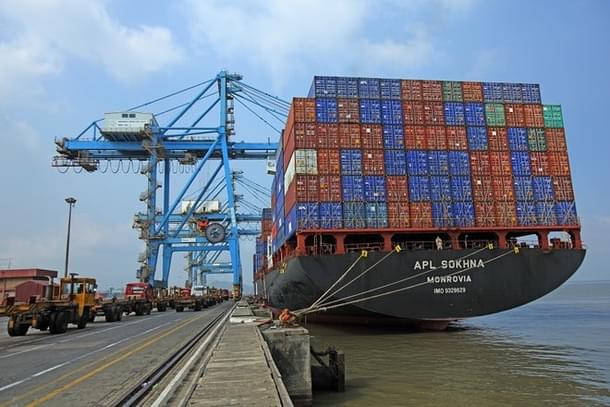News Brief
Lower Trade Gap And Healthy Receipts Lead To Sharp Fall In India's Current Account Deficit In Q2 FY24
Kuldeep Negi
Dec 27, 2023, 10:19 AM | Updated 10:19 AM IST
Save & read from anywhere!
Bookmark stories for easy access on any device or the Swarajya app.


The current account deficit (CAD) of India significantly reduced to 1 per cent of GDP in the second quarter (Q2) of FY24, compared to 3.8 per cet in the same quarter of the previous year.
This was primarily due to a decrease in the merchandise trade deficit.
The CAD also narrowed due to healthy earnings from service exports, substantial growth in private transfer receipts, primarily remittances, and strong inflows from non-resident deposits.
Current Account Deficit (CAD) arises when the cost of imported goods and services surpasses the value of exported goods and services.
In absolute terms, the current account balance of India (which combines the trade balance with net factor income, including interest and dividends from foreign investments or remittances and transfers from overseas workers) for Q2FY24 (July-September) registered a reduced deficit of $8.3 billion, down from $30.9 billion in Q2FY23.
The country’s CAD in the reporting quarter was slightly lower vis-a-vis $9.2 billion (1.1 per cent of GDP) in Q1FY24 (April-June).
The Reserve Bank of India noted that the reduction in the current account deficit year-on-year in the second quarter of fiscal year 2024 was primarily due to the decrease in the merchandise trade deficit, which fell to $61 billion from $78.3 billion in the same quarter of the previous year.
RBI Governor Shaktikanta Das highlighted in his monetary policy statement on December 8th that both merchandise exports and imports returned to the growth zone in October 2023.
According to the Reserve Bank of India's report on "Developments in India's Balance of Payments for Q2", there was a year-on-year growth of 4.2% in services exports, amounting to $83.4 billion, up from $80 billion. This increase was primarily due to a rise in software, business, and travel services exports. Furthermore, net services receipts saw an increase both sequentially and on a year-on-year basis.
The primary income account, which mainly represents investment income payments, saw an increase in net outflow, rising to $12.2 billion from $11.8 billion the previous year.
The central bank reported that private transfer receipts, which primarily consist of remittances from Indians working abroad, reached $28.1 billion. This indicates a 2.6 per cent rise compared to the same period in the previous year.
In Q2FY23, the net foreign direct investment (FDI) experienced a departure of $0.3 billion, a stark contrast to the $6.2 billion influx seen previously.
The net inflow of Foreign Portfolio Investment (FPI) was reported at $4.9 billion, which is less than the $6.5 billion recorded in the second quarter of fiscal year 2023.
In the second quarter of the fiscal year 2024, India experienced a net outflow of $1.8 billion in external commercial borrowings. This was a significant increase from the net outflow of $0.5 billion recorded in the same quarter of the previous fiscal year, 2023.
The net inflow of non-resident deposits was recorded at $3.2 billion, showing an increase from the $2.5 billion net inflow in the second quarter of the fiscal year 2023.
Kuldeep is Senior Editor (Newsroom) at Swarajya. He tweets at @kaydnegi.





